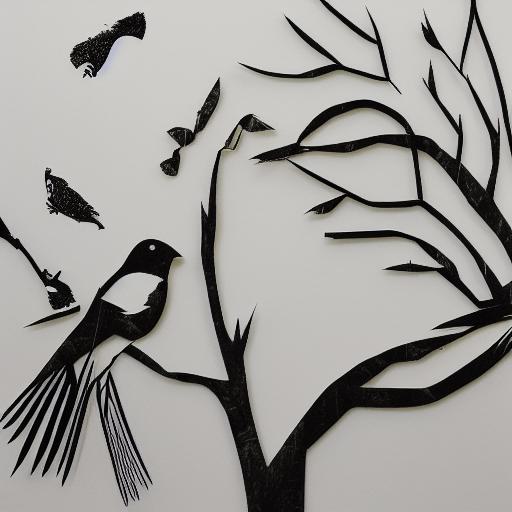What is paper cut art?
Paper cut art, also known as paper cutting, is a form of art where an artist uses scissors, knives, or other cutting tools to create intricate designs and images by cutting paper. The paper can be a single color or multiple colors and can be layered to create depth and dimensionality. Paper cut art can range from simple designs to highly detailed and elaborate pieces. This art form has been practiced for centuries in various cultures around the world, including China, Japan, and Germany, and continues to be popular today as a way to create beautiful and unique works of art using just paper and cutting tools.
Wide range of designs and styles
Paper cut art is a highly versatile and expressive form of art that can be used to create a wide range of designs and styles. Some paper cut artists create geometric patterns and shapes, while others use the technique to create realistic portraits, landscapes, and scenes. Some artists even combine paper cutting with other artistic mediums such as painting, drawing, or photography to create mixed media works.
What is AI-generated art
AI-generated art is a form of art that utilizes artificial intelligence algorithms to produce images in a fast and efficient manner. It offers several benefits over traditional art-making methods, including the ability to experiment with different styles and techniques and the flexibility to create designs that meet specific requirements. Additionally, AI-generated art promotes diversity and inclusivity in the art world by providing a platform for artists from various backgrounds to express their unique experiences and perspectives.
Designers can take advantage of online tools like Visual Paradigm Online to easily incorporate AI-generated art into their designs. By utilizing websites such as Stable Diffusion, Midjourney, or Dalle 2, artists can generate their own AI-generated art and explore the endless creative possibilities that this technology offers.
How to write this prompt?
First, let’s break down the different elements of the prompt and how they influence the generated image. The prompt begins with “bird and tree paper cut,” which gives the AI model a clear idea of the subject matter it should include in the image. The AI will likely generate an image that features both a bird and a tree, perhaps with a paper cut aesthetic.
Next, the prompt includes “a picture inspired by Paul Bird.” This reference to Paul Bird could influence the AI’s interpretation of the image in a number of ways. For example, the AI may incorporate elements of Paul Bird’s style or subject matter into the image, or it may simply use this as a starting point for generating its own unique interpretation.
The phrase “trending on Pixabay” suggests that the prompt is based on a popular or widely-shared image on the Pixabay platform. This information may influence the AI’s decision-making process by suggesting certain visual elements or styles that have been popular with users on that platform.
Finally, the prompt includes the phrases “paper cut art” and “paper cut out,” which emphasize the importance of the paper cutting aesthetic to the image. These phrases could influence the AI’s use of color, shape, and texture to create a paper cut-like effect in the final image.
Overall, by combining these different elements into a single prompt, the AI model has a clear idea of what type of image it should generate and what visual elements to include. While the AI’s interpretation of the prompt may vary based on its training data and other factors, the prompt itself provides a useful guide for generating a specific type of image that meets certain aesthetic and thematic criteria.


